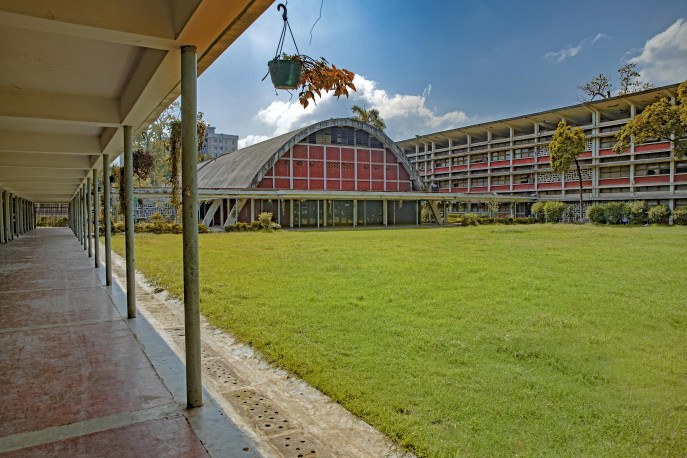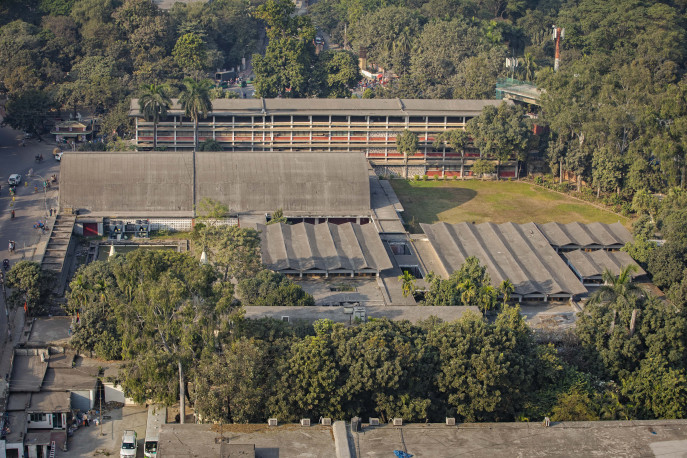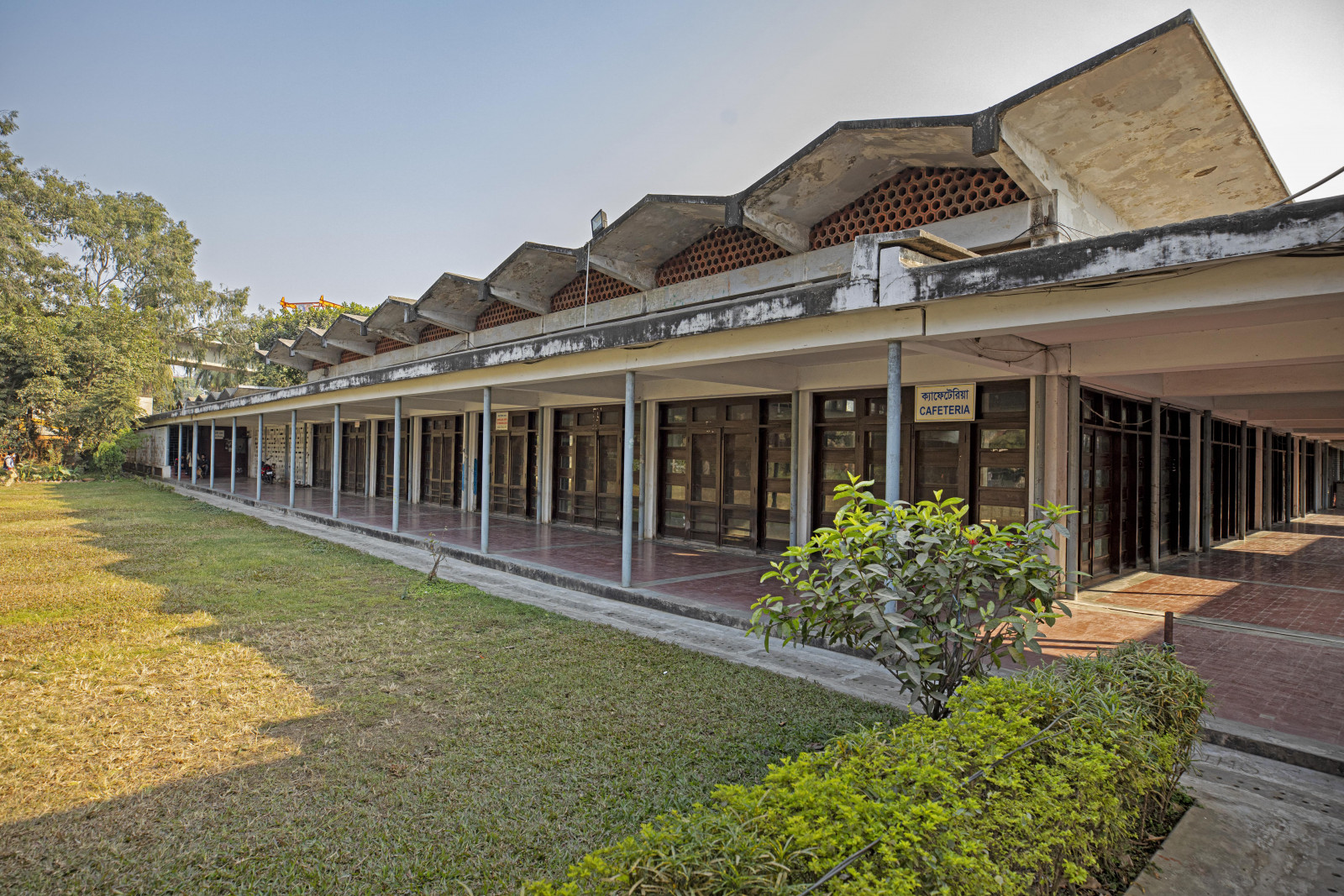Demolition of TSC: Loss of an architectural landmark and discontinuation of history
TSC’s iconic structure inside Dhaka University campus is considered a historical and architectural landmark. Demolition of such a structure would mean the destruction of an architectural charm and erasure of valuable parts of our history

A conscientious society treats and preserves its architectural and cultural heritage with the utmost care, as they represent a country's history. If we continue to destroy both tangible and intangible heritage, the coming generations will be disconnected from our real history.
Many doubt whether the proposed multi-storied building in place of present TSC (Teacher-Student Center) will have the green lawn, open space and the sign of our history and tradition.
Development is necessary but that does not mean we have to destroy the old structure of TSC as it has a special history and unique architectural significance. TSC's dome-shaped structure is considered an iconic landmark not only inside DU (University of Dhaka) campus but also in the broader cityscape of Dhaka.
The 1960s marked a decade of architectural development in the country. One of the architectural charms defining the period was TSC, which played a pivotal role in our political landscape.

The Greek architect, planner, and theoretician Constantinos Apostolos Doxiadis (1913-1975) designed TSC during the early 1960s. Located at the heart of DU, TSC exemplifies a modernist architectural sensitivity toward spatial needs for tropical climatic conditions.
It blends local parameters of space-making—particularly the indoor-outdoor continuum and generation of space around courtyards—with the international-style visual expression of building forms.
Doxiadis was fully aware of the culture and climate of this part of the world while developing the design. He was inspired by the traditional village houses, in particular, the courtyard in front of a house.
At TSC, we find an open field in the middle where students sit together having adda. He mingled tradition and the modern architectural idea. We see a courtyard in the middle of TSC and a Butterfly Canopy at the entrance. The roof of the auditorium looks like a parabolic volt that is eye-catching. The use of brick nets in a complex manner allows wind to enter freely.

Ignoring the top-down planning model of the first half of the twentieth century, Doxiadis employed the notion of ekistics to promote a multidisciplinary, inclusive, and bottom-up approach to architecture and city planning.
He hoped that such an approach would create a synergy among the organic context of the milieu, the data-driven theorisation of planning, and universal values of harmonious living.
According to renowned architect Professor Adnan Zillur Morshed, Doxiadis evidently tried out his 'theories' of ekistics at TSC and other works in Bangladesh. Upon the approval of Doxiadis Associates' final design for the TSC by the DU authorities, the construction of the complex began in March 1962. The 3.7-acre site of TSC is located at the meeting of Bakshi Bazar Road and Mymensingh Road, with the Suhrawardi Udyan (park) on the east.
Access to the site is from the north, where three streets meet to form a major urban node and the geographic centre of the rambling campus of DU. It is a historic gathering place of students and the public during national celebrations. The horizontal building block to the north acts as a transition point from the urban hustle and bustle to the verdant interior of the complex.
The buildings are aligned with the east-west axis to take advantage of the prevailing breeze from the south or the north. The three-storied building, measuring 158 by 37 feet, is rectangular in shape and composed of a resistant concrete frame and non-load-bearing brick walls.

It is a trendsetting building as it employs a double-roofed structure to minimize heat gain by allowing the cool breeze to pass through the two layers of the roof. Providing a protective canopy for the building shell, the upper roof has a wing-like formation with rainwater drainage in between.
The rectangular auditorium, measuring 170 by 85 feet, is covered by a rock-hard concrete parabolic vault, a pioneering construction technique in the country. The auditorium has a level floor with removable seating and a spacious stage with dressing rooms.
The airy cafeteria features a high ceiling and overlooks the sprawling courtyard in the north. It consists of two segments placed on either side of a linear green mall. The western wing of the cafeteria contains a large games room, dressing rooms, toilets, and showers that serve the swimming pool. The eastern wing houses the main eating area and a kitchen with necessary supplementary spaces.
Covered walkways, supported on steel columns, weave the major buildings and green spaces together. Functioning more like a continuous loop of linear pavilions rather than corridors, the walkways are the social spine of the entire complex.
TSC is one of the first buildings in Bangladesh to employ a pavilion theme in non-residential architecture. Considered a sensible response to the needs of the tropical climate, Doxiadis assembled the buildings and courtyards in a lush tapestry of organic fluidity and special interconnectivity.
As one enters the TSC, a sculpture by Hamiduzzaman Khan greets the visitors. Across the green lawn to the east of it stands a small Greek Memorial. This building has a square structure, similar to a classical Doric monument, rather than a more ecclesiastical style, with an entrance on the east side.

The flat roof projects forward on all sides, transforming the square plan into a cruciform shape. It is the only trace of the small Greek community that existed in Bangladesh in the 19th century. The mausoleum still has several epitaphs attached to the wall, most of which are written in classical Greek. Inside the swimming pool enclave of the centre, two small Siva temples are housed, with a small monument between them.
Apart from being an architectural landmark, the TSC also has a tremendous historical value which is worth preserving. Demolition of the TSC could risk erasing parts of our history.
Recently, with the erection of an unplanned sculpture coupled with the structures of metro rail, we can no longer trace the place of Shahbagh intersection where lakhs of people assembled demanding the trial of war criminals of 1971 in 2013. Thus, we have erased the recent history of a place. The spirit of Ganojagoron (mass uprising) can now be identified through seeing the archived photos and videos.
Similar discontinuation of history will take place if we completely demolish TSC, one of the modern architectures of Dhaka. We all know the 1960s and 70s in erstwhile East Pakistan as a decade of political unrest, as Bangalis fought for self-rule. Streets were filled with activists demanding political emancipation.
The University of Dhaka is not only an educational institution but also a carrier of the rich history and tradition of this country. The university was a breeding ground for all the glorious movements, while many important meetings took place in TSC during the war of liberation.
Time and again, TSC became a part of a national narrative and many of the pivotal student movements took shape around this historic place. Furthermore, TSC is also celebrated as a verdant and breezy urban space, a rare liberating experience in this overcrowded city. Such kinds of architecture bear the history and tradition of a nation, which should not perish, as they tell the history of a nation.
Demolition of a structure like TSC would erase valuable parts of our history, as an urban planner and environmentalist architect Iqbal Habib pointed out, "Architecture and literature are two principal organs of human society that last for generations, to tell the history of a nation. TSC is one of the first examples of modern architecture in Dhaka. The compound could have been expanded without demolition of the original structure. The attempt to bulldoze such an iconic creation by Doxiadis is an attempt at erasing the city's history."



 Keep updated, follow The Business Standard's Google news channel
Keep updated, follow The Business Standard's Google news channel
















